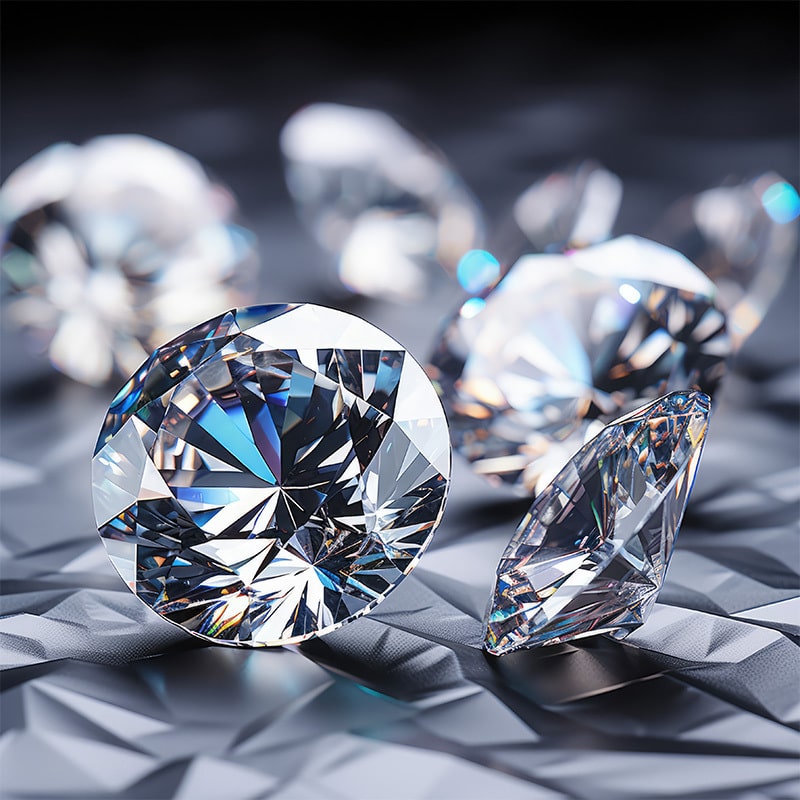Lab grown diamonds 4Cs have gained significant popularity in recent years as a sustainable and ethical alternative to mined diamonds. These diamonds share the same physical, chemical, and optical properties as their natural counterparts but are created in controlled laboratory environments. When purchasing lab diamonds, understanding the 4Cs—Cut, Color, Clarity, and Carat Weight—is essential to making an informed decision.
The 4Cs of Lab Grown Diamonds
Cut: Maximizing Brilliance
The cut of a diamond plays a crucial role in its brilliance and sparkle. A well-cut lab-grown diamond will reflect light beautifully, creating the dazzling effect that makes diamonds so desirable. The cut is graded on a scale ranging from Excellent to Poor, with Excellent and Very Good cuts offering the most brilliance. When selecting a lab diamond, it is advisable to prioritize the cut over other factors, as a superior cut enhances the overall appearance of the stone.
Color: The Range of Hues
Lab-grown diamonds, like natural diamonds, are graded on a color scale from D (colorless) to Z (light yellow or brown). Colorless diamonds (D-F) are the most sought after and valuable, while near-colorless diamonds (G-J) offer excellent value for those looking for high-quality diamonds at a lower price point. Unlike natural diamonds, lab diamonds can also be produced in fancy colors such as blue, pink, and yellow through controlled modifications during the growth process.
Clarity: Evaluating Inclusions
Clarity refers to the presence of internal and external imperfections, known as inclusions and blemishes, respectively. The Gemological Institute of America (GIA) grades diamond clarity on a scale from Flawless (FL) to Included (I1-I3). Because lab-grown diamonds are created under controlled conditions, they often have fewer inclusions than mined diamonds, making them an attractive option for those seeking high-clarity stones. However, it is still essential to assess clarity carefully to ensure optimal quality.
Carat Weight: Finding the Right Size
Carat weight measures the size of a diamond, with one carat equaling 200 milligrams. While larger diamonds are generally more expensive, other factors such as cut, color, and clarity also influence a diamond’s overall value. When choosing a lab-grown diamond, it is helpful to balance carat weight with the other 4Cs to find a stone that meets both budget and aesthetic preferences.
Benefits of Choosing Lab Diamonds
Lab-grown diamonds offer numerous advantages over mined diamonds, making them an increasingly popular choice among consumers. Some key benefits include:
- Ethical Sourcing: Lab-grown diamonds are created without the environmental and human rights concerns associated with traditional diamond mining.
- Affordability: These diamonds typically cost 30-40% less than natural diamonds of similar quality.
- Sustainability: The production of lab diamonds has a lower carbon footprint compared to mining operations.
- Quality and Purity: Many lab diamonds have fewer inclusions and are available in higher-quality grades than their natural counterparts.
How to Choose the Best Lab-Grown Diamond
Selecting the perfect lab-grown diamond involves careful consideration of the 4Cs and personal preferences. To make the best choice, consider setting a budget, prioritizing cut quality, and determining the ideal balance between color, clarity, and carat weight. Additionally, purchasing from reputable retailers and ensuring certification from established grading laboratories such as the GIA or IGI can help guarantee quality and authenticity.
Conclusion
Lab-grown diamonds provide a stunning, ethical, and cost-effective alternative to mined diamonds. By understanding the 4Cs—Cut, Color, Clarity, and Carat Weight—buyers can confidently select a high-quality diamond that meets their needs. Whether for an engagement ring, wedding band, or luxury jewelry piece, lab diamonds offer unparalleled beauty with a conscious choice for the future.

